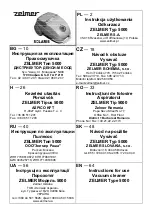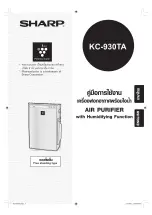
VAC 20
EN
18
VAC
20-1500
20-2500
20-3000
20-4000
Compressed air quality
Clean dry, ISO 8573-1 class 5
Required air pressure
6–8 bar (87–116 PSI)
Maximum air consumption intermittent
70 N-Litres/min (2.5 cfm)
Material description
Powder coated steel, copper, stone wool insulation.
Material recycling
Approximately 95% to 97% of the weight.
FR 160 spring, see Figure
3
.
1 - six turns Ø 2
mm wire
2 - four turns Ø
2 mm wire
3 - six turns Ø
2,5 mm wire
-
* Motor weight included.
** With optional silencer.
3.2
Function
VAC 20 is a series of vacuum units that operate for an air flow up to the level specified in
‘Table 3-1: Technical data’.
Units are delivered with different capacities, voltages, and frequencies. The motor is a
3-phase asynchronous motor. The motor power matches the unit’s capacity. The vacuum
source is a belt-driven high-pressure fan. The power consumption of the fan increases with
increasing air flow. It is necessary to minimise the power requirement during Y/D - starting.
This is done by restricting the air flow while the motor is operating in Y-mode.
VAC 20 units have a start-up valve at the fan inlet. The valve is, apart from a small leakage
flow, closed when the unit is at stand still and during start up in Y-mode. The valve will open
when the motor switches over to full power in D-mode. The valve is controlled from the
unit’s start and control unit.
See Section
‘4.6 Bearing temperature switches’
regarding the bearing overheating cut-out
on VAC 20. See Section
‘4.7 Optional: Compressed air switch’
regarding compressed air
switch.
3.2.1
Anti surge control
A high pressure centrifugal fan operating with too small an air flow, will run in a surge. This
means that the operation is not stable. A characteristic ‘pumping’ or ‘breathing’ sound can
be heard and the air stream at the fan outlet will be uneven. The vacuum generation is
unstable and this can, under certain circumstances, cause the ducting to move in rhythm
with the pumping.
The motor current is closely related to the air flow through the fan. By monitoring the
current by means of a current transformer in the start and control unit, it is possible to
determine whether the flow is small enough to cause a surge. If this is the case, a valve
inside the vacuum unit will gradually open to let some more air into the fan.
There are two versions of VAC-20 with the ASC function. One is controlled with the current
transformer and the current sensing relays. The other version is controlled by the PLC in the
HV Control Panel and has the text ASC by PLC on the base label.
Summary of Contents for VAC 20
Page 2: ...VAC 20 2 ...
Page 8: ...VAC 20 8 Figures 1 2 3 4 5 6 7 8 1 2 3 4 5 6 7 8 1 2 3 1 1 2 4 3 ...
Page 9: ...VAC 20 9 1 2 3 4 7 11 10 5 6 8 9 5 ...
Page 12: ...VAC 20 12 35 ml ATF 70 85 mm X U1 V1 W1 W2 U2 V2 X 9 11 10 10mm 0 39 12 13 1 6 7 5 4 3 2 ...
Page 13: ...VAC 20 13 14 15 16 ...
Page 88: ...VAC 20 DE 88 ...
Page 327: ......
Page 328: ...www nederman com ...
















































